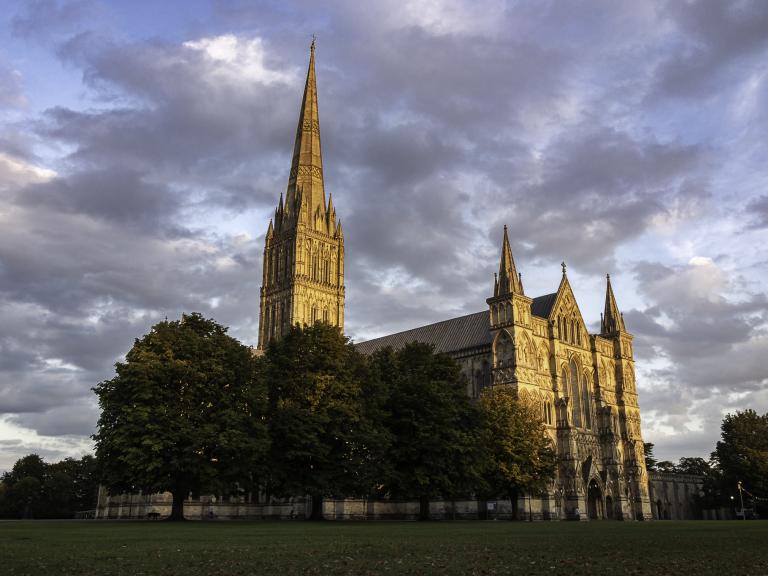This week we stay in the Close and focus on one particular building, its archaeology and role in communicating the subject to a wider audience. The King’s House formed the original Prebendal residence of the Abbot of Sherborne in Salisbury. It was erected in the 13th or 14th century, extensively remodelled in the 15th and 17th centuries and acquired its name following visits by King James I of England in 1610 and 1613. The oldest part of the building survives as a 15th century range, built from stone and flint, with an early 17th century brick addition. Such an imposing building, which is now the home of Salisbury Museum, has a colourful past, however no archaeological work of any significance had taken place to tell its hidden story.
2016
The ideal opportunity to redress this came in 2016. It was suggested that Wessex Archaeology should dig a test pit in the museum garden as part of the annual Festival of Archaeology, after all ‘digging’ epitomises what ordinary people consider that archaeologists do. This annual nationwide Festival aims to promote archaeology to the general public in a series of events and open days. The occasion made it possible to provide a real ‘dig’, albeit on a small scale, to offer an accompanying running commentary of what we were doing, why we were doing it, what we were finding, how we record it and convert the information into a story. This approach, offering ‘instant’ archaeology to the people, the use of test pit excavations to demonstrate techniques and the idea that back gardens can actually be interesting, borrows much from ideas that were championed by the late Mick Aston and trialled by Channel 4’s Time Team.
The project commenced by digging a test pit, 1 m sq, in the garden at the rear of the King’s House. The exercise was undertaken with no grandiose expectations but simply hoped that the test pit would contain a sequence of layers, which form the basis of all archaeology, which could be explained and interpreted to the public. In the event the results excelled, revealing a chronological sequence of alluvium, dumped gravel and garden soils, with finds, all dating from 13th - 14th century, passing through time upwards to the present day (pictured below). This, in microcosm, reflects the history of the city. The deposits indicated that previous owners had retained the space at the rear of the building as open land. This pattern persisted until after WWII when the Salisbury Teachers Training College expanded onto the floodplain behind the King’s House.
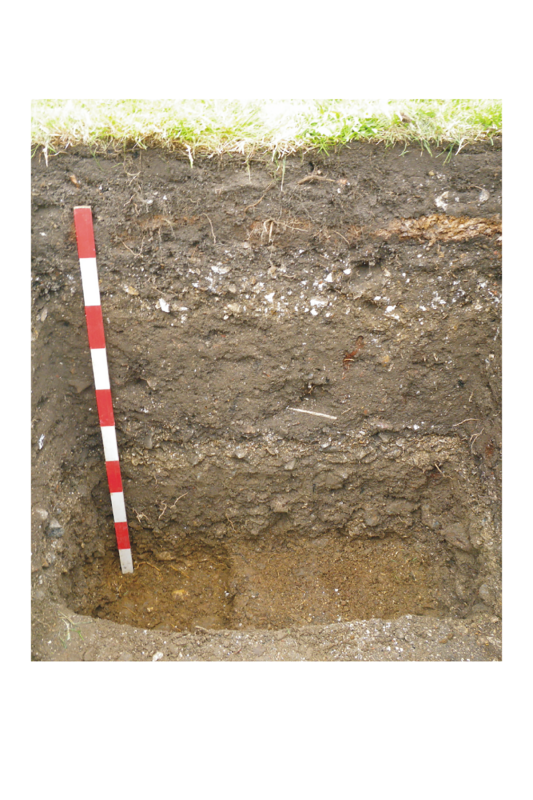
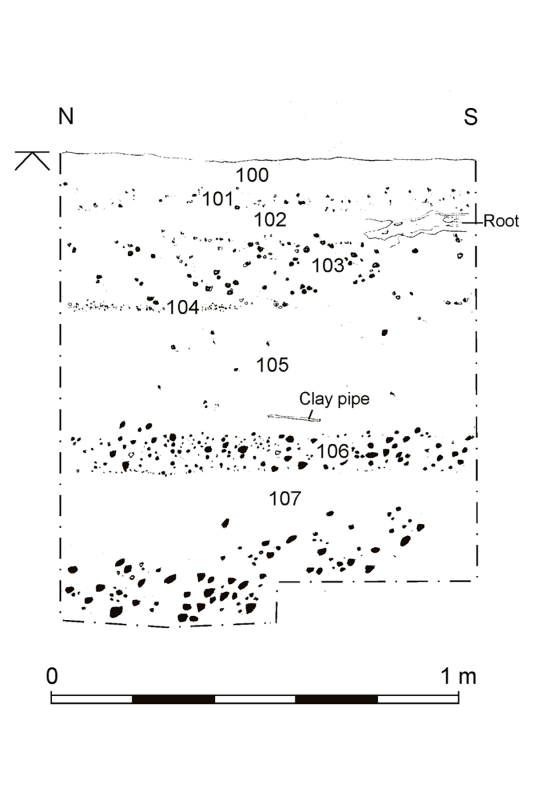
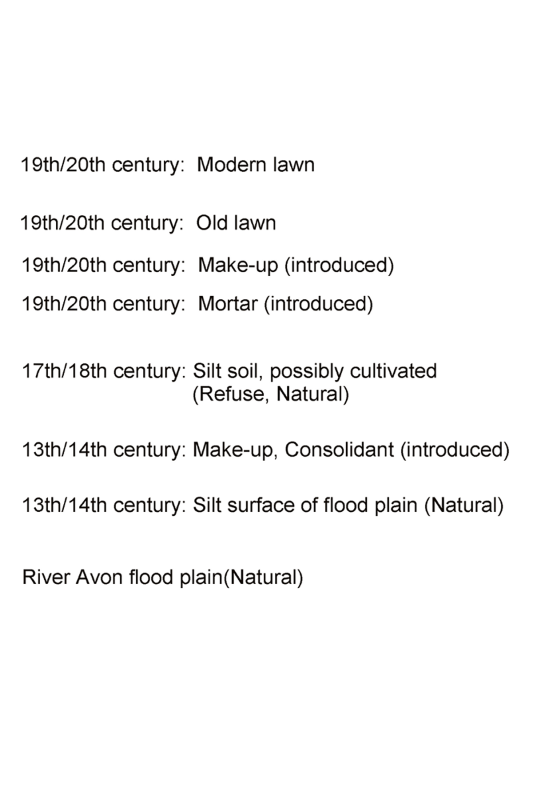
2017
The success of the 2016 test pit resulted in a request that the process be repeated the following year. The project now adopted a more focussed research approach, combining outreach with opportunity to expand knowledge of the archaeological background of the King’s House about which so little was known. This began with an attempt to relocate a former ‘long-lost’ gate house, known from survey documents of 1649 and a sketch of 1799 through which visitors would have passed to enter the outer courtyard. The test pit was positioned following a geophysical survey which located the wall lines. The results demonstrated that the gate house foundations comprised mortared Chalk rubble blocks. These foundations were laid in a trench that was cut through layers of made-up ground which contained medieval roof tile. A clay pipe bowl in the backfilled foundation trench indicated that the gate house was constructed in 1640–50. The superstructure was faced with limestone and flint, with a chalk rubble core. Demolition was documented in the early 19th century.
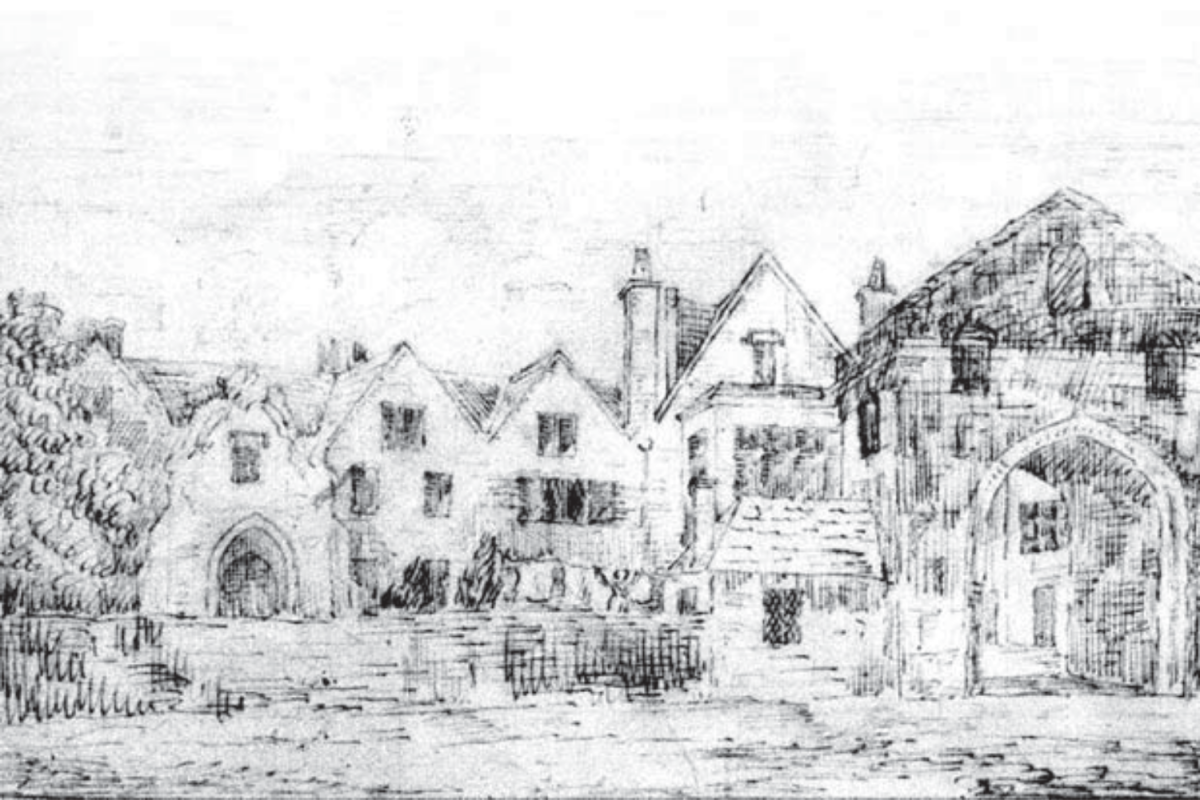
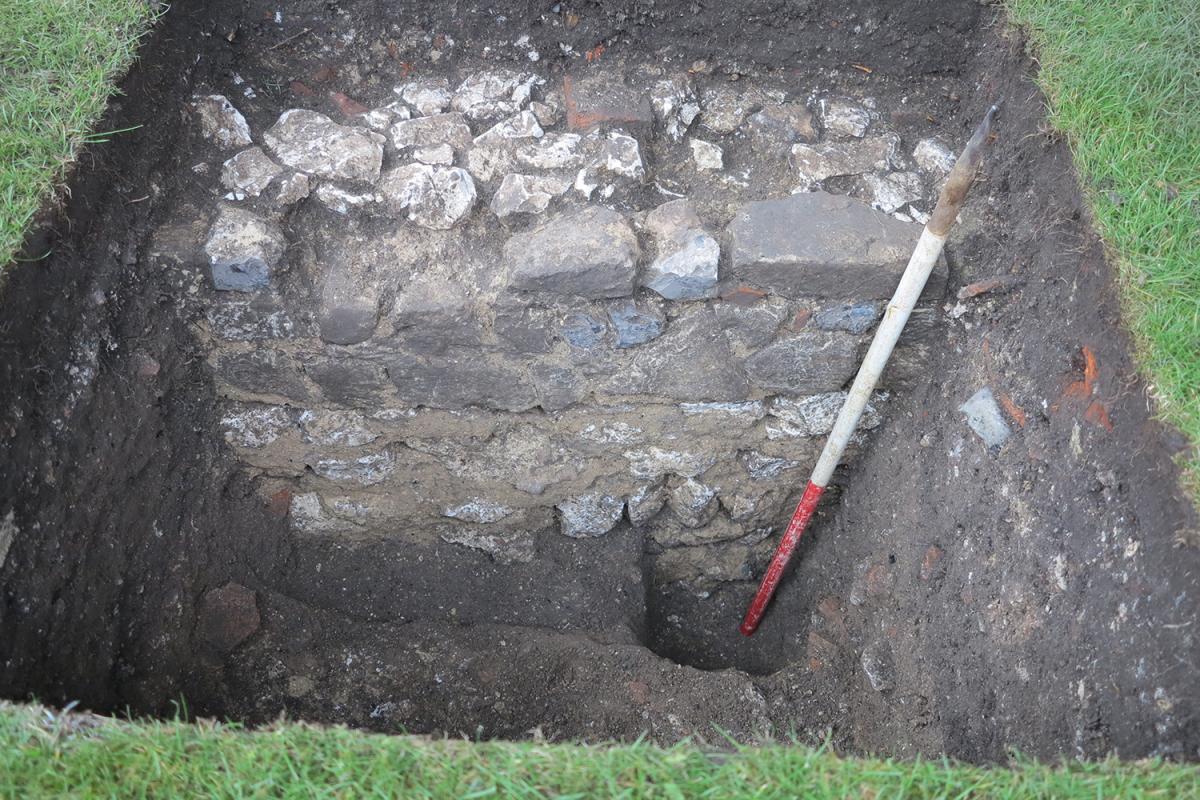
Left: 1799 sketch of the gatehouse by E Wickens (by permission of Wiltshire Museum); right: the test pit
2018
In 2018 the project relocated the flint foundations of an extension to the extant north range of the museum, which is believed to have been constructed in the 15th-century and now houses the museum cafeteria. Pottery indicated that the extension, which once continued to the Close perimeter road, was probably constructed in the 16th-17th century. Contemporary illustrations indicate that it was demolished between 1804 and 1807, possibly in tandem with the gate house.
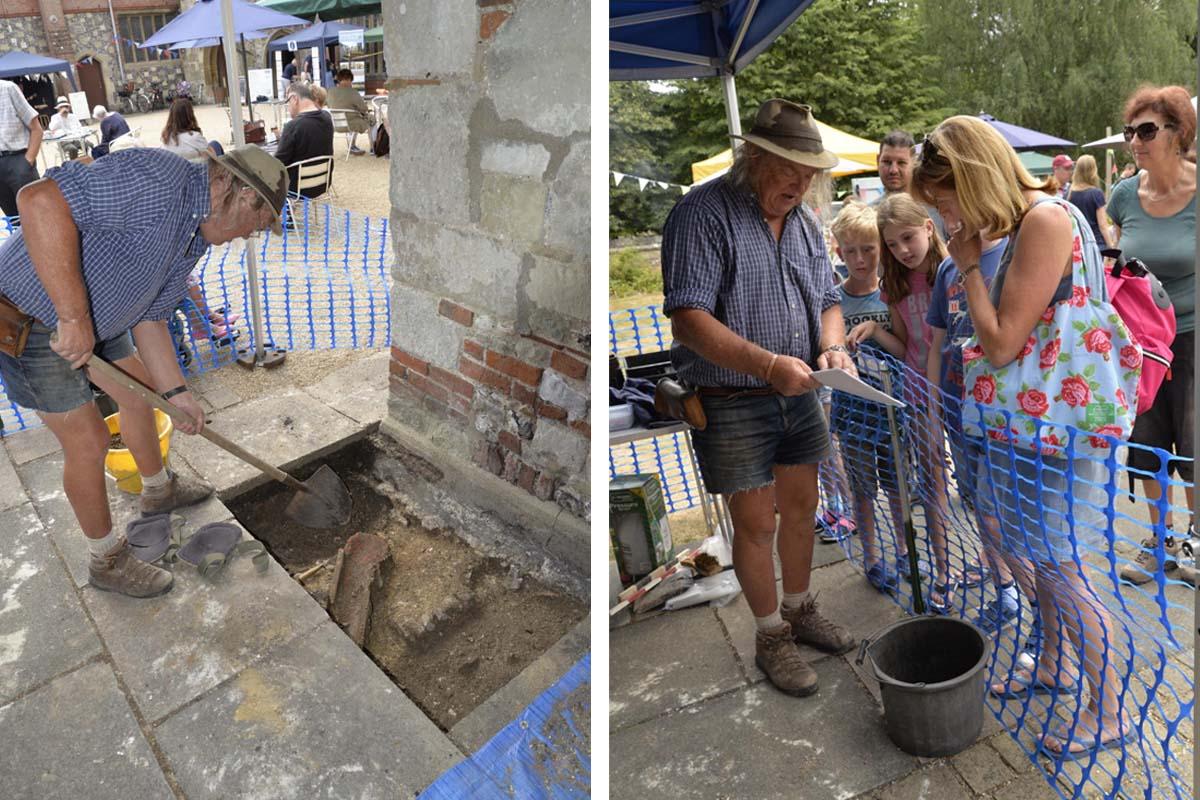
2019
A final test pit was dug in 2019 to expose the wall foundations of the extant north range. The excavation demonstrated that the flint foundations were relatively shallow but comparable to other medieval foundations in the city. No datable material was found to confirm or deny the proposed 15th century construction date. This test pit was dug in advance of the Festival to maximise the benefits of archaeology as a teaching aid during term-time. Advanced publicity attracted great public interest reaching over 30,000 people on social media, with 600 visitors witnessing excavation of the test pit and 300 school children attending on the following day. The progress of the work was filmed and edited for release on Youtube which has currently reached 15,000 viewers, fulfilling the aims to bring archaeology to the public.
By Phil Harding, Fieldwork Archaeologist
Can you support our work to share the story of Salisbury with the community? Please consider supporting our new film, Salisbury Uncovered.
